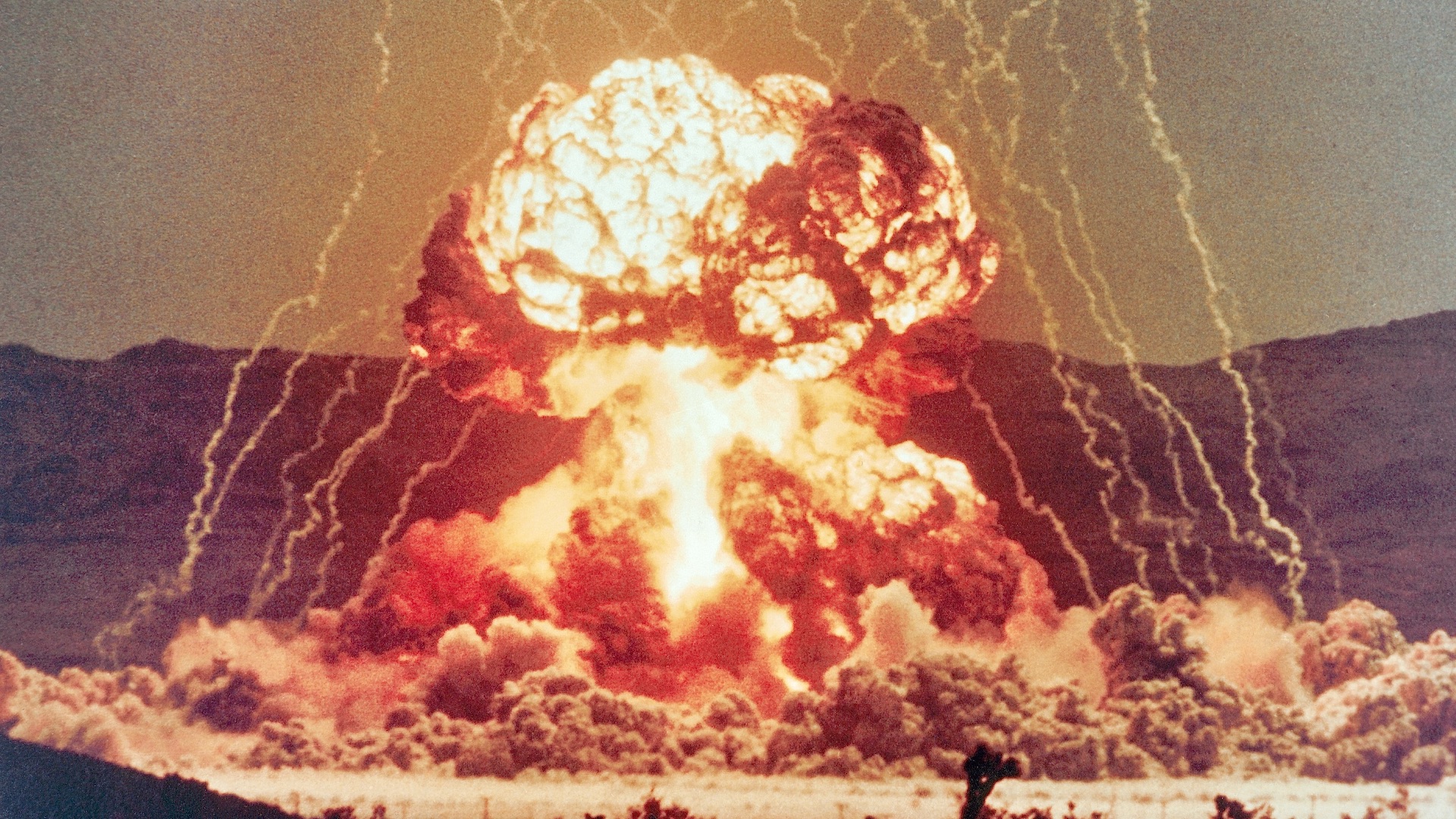If you’ve seen images of the various mushroom clouds captured during U.S. nuclear weapons tests of the 1950s, you’ve probably wondered why so many feature odd-looking vertical streaks around them. These smoke trails, which can be seen in the topshot above, aren’t present in images taken during the first-ever nuclear weapons test – code-named ‘Trinity’ – in July 1945, or in the iconic images of the atomic bombings of Hiroshima and Nagasaki in August 1945.
@atomicarchive on Twitter, whose YouTube channel we’ve featured previously on The War Zone, has produced a great explainer video about what these smokey lines are and why they are seen in so many nuclear explosion images of the early Cold War period. In order to get to the bottom of all this, we need to look at the science behind nuclear explosions, and what occurs within the initial microseconds after the detonation of a nuclear bomb.

As the video above explains, the development of the fireball in an airburst can be subdivided into multiple phases. In the initial microseconds after a nuclear explosion, the blast’s radiation front expands much faster than the inner shock wave. Yet as the fireball expands, the transfer of energy by radiation slows, with the inner-shockwave beginning to overtake the radiation front.

When the fireball’s average temperature drops to 300,000 degrees Celsius – which for a 20-kiloton burst occurs at around a tenth of a millisecond after the explosion – the shockfront (a moving wall of highly compressed air) starts to move ahead of the radiation front of the inner isothermal sphere (the fireball), the video notes. The shockfront then compresses the ambient air, raising its temperature to render the air incandescent and opaque.
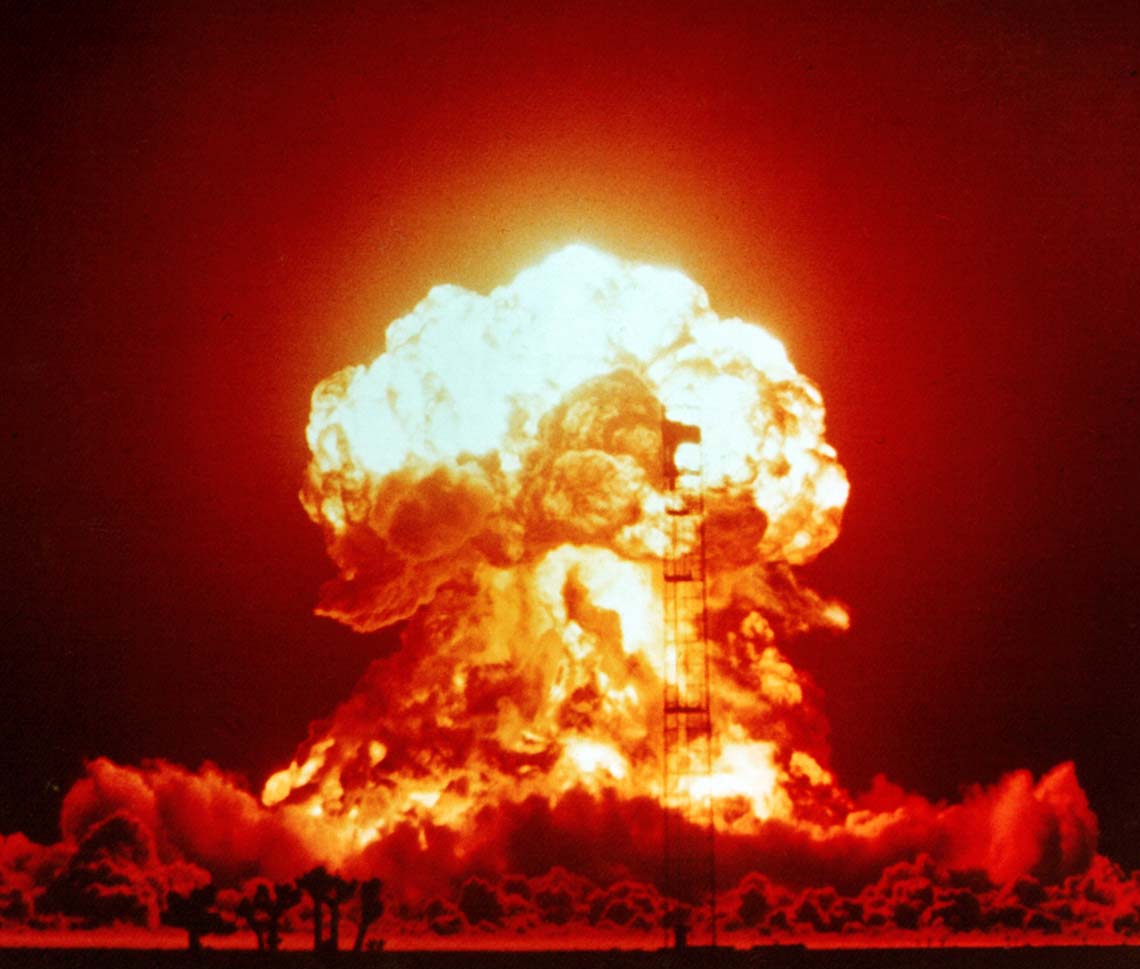
As the fireball continues to expand, the shocked air temperature continues to steadily decrease. Eventually, the shockfront becomes more or less invisible – as it can no longer render air incandescent through compression heating. Once this occurs, the isothermal sphere becomes visible through the shock front. Occurring at around 15 milliseconds after detonation, this condition is commonly referred to as a ‘breakaway.’
The overall faintness of the shockfront makes recording its progress very difficult. In order to achieve this, shock pressure gauges can be used. Yet they are hard to deploy anywhere except near the ground and often produce inaccurate readings due to interactions between the shockwave and the earth’s surface.
A solution to this problem was first proposed during the first-ever nuclear weapons test – code-named ‘Trinity’ – which took place in the Jornada del Muerto desert in New Mexico on July 16, 1945.
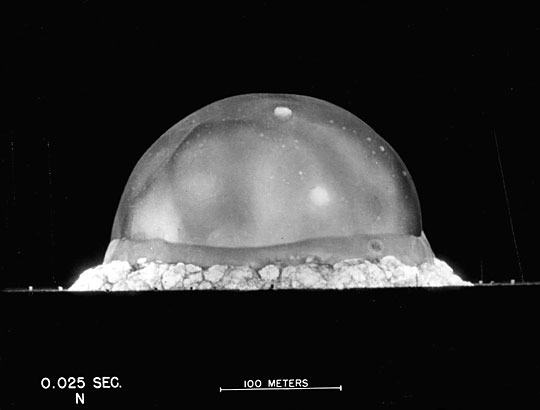
During the Trinity test, a high-speed Fastax 16mm fast-speed camera, capable of recording at 10,000 frames per second, captured the cable of a barrage balloon behind the fireball in the immediate moments after the bomb’s detonation. As the shockfront began to pass in front of the cable, what looked to be a break in the cable was pictured. This was in fact an optical illusion, caused by the refraction of light by the compressed air behind the shock front. The ‘break’ just so happened to coincide with the location of the shockfront – allowing for its progress to be measured across multiple images of the blast.

The Naval Ordnance Laboratory (NOL) ended up developing special smoke rockets to test this phenomenon and track the invisible shock front in subsequent nuclear explosions. These rockets were located along the blast line, and launched from the ground seconds before detonation, thus creating a vertical array of white smoke trails. Images and video taken during Operation Tumbler-Snapper Able – a series of nuclear tests conducted in early 1952 at the Nevada Test Site – show the rockets being put to use for what was likely the first time.
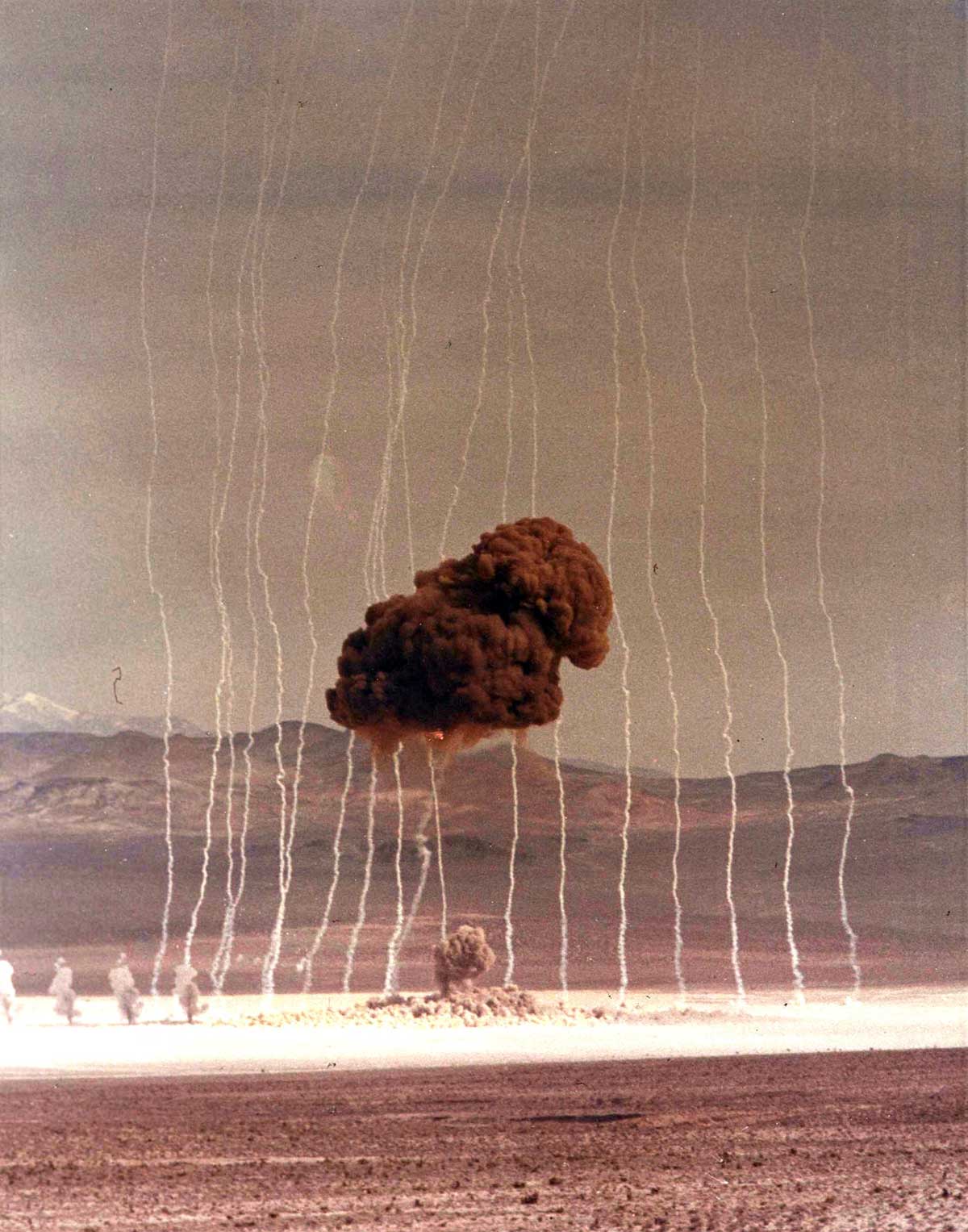
Using the smoke rockets allowed for the progress of the shockwave to be followed by observing the hooks in the smoke trails at the shockfront, due to changes in the air’s refractive index. From there, the shock velocity of the explosion could be calculated based on changes in time and space between the shockfront and the vertical smoke trails.

Other nuclear tests following Operation Tumbler-Snapper Able attempted to measure explosions using smoke rockets, including Operation Upshot-Knothole (1953) and Operation Teapot (1955), which saw multiple tests conducted at the Nevada Test Site. The explosion and surrounding smoke trails seen in the shot at the top of this story were a product of Operation Teapot, specifically the “MET” (Military Effects Tower) test which occurred on April 15, 1955.
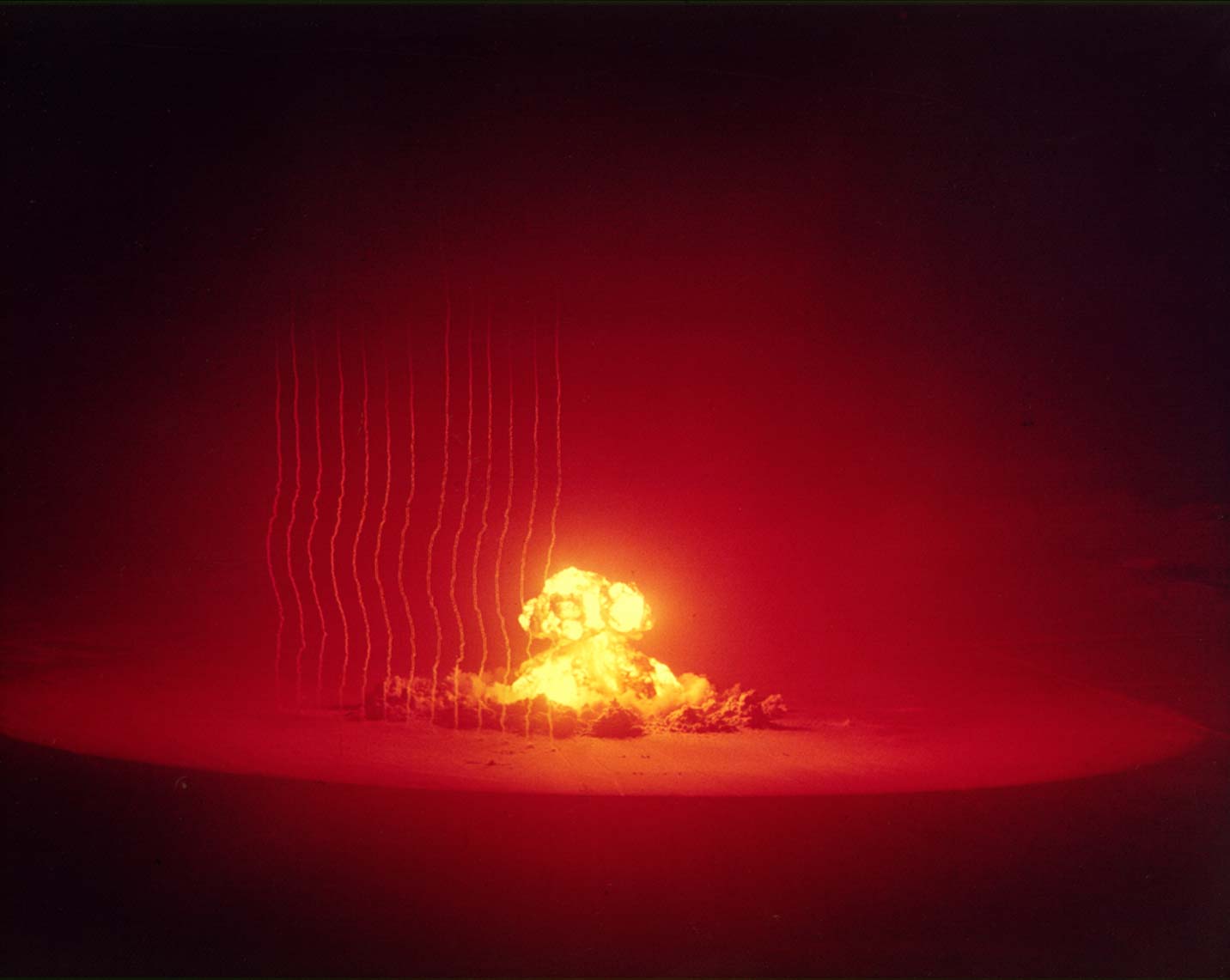

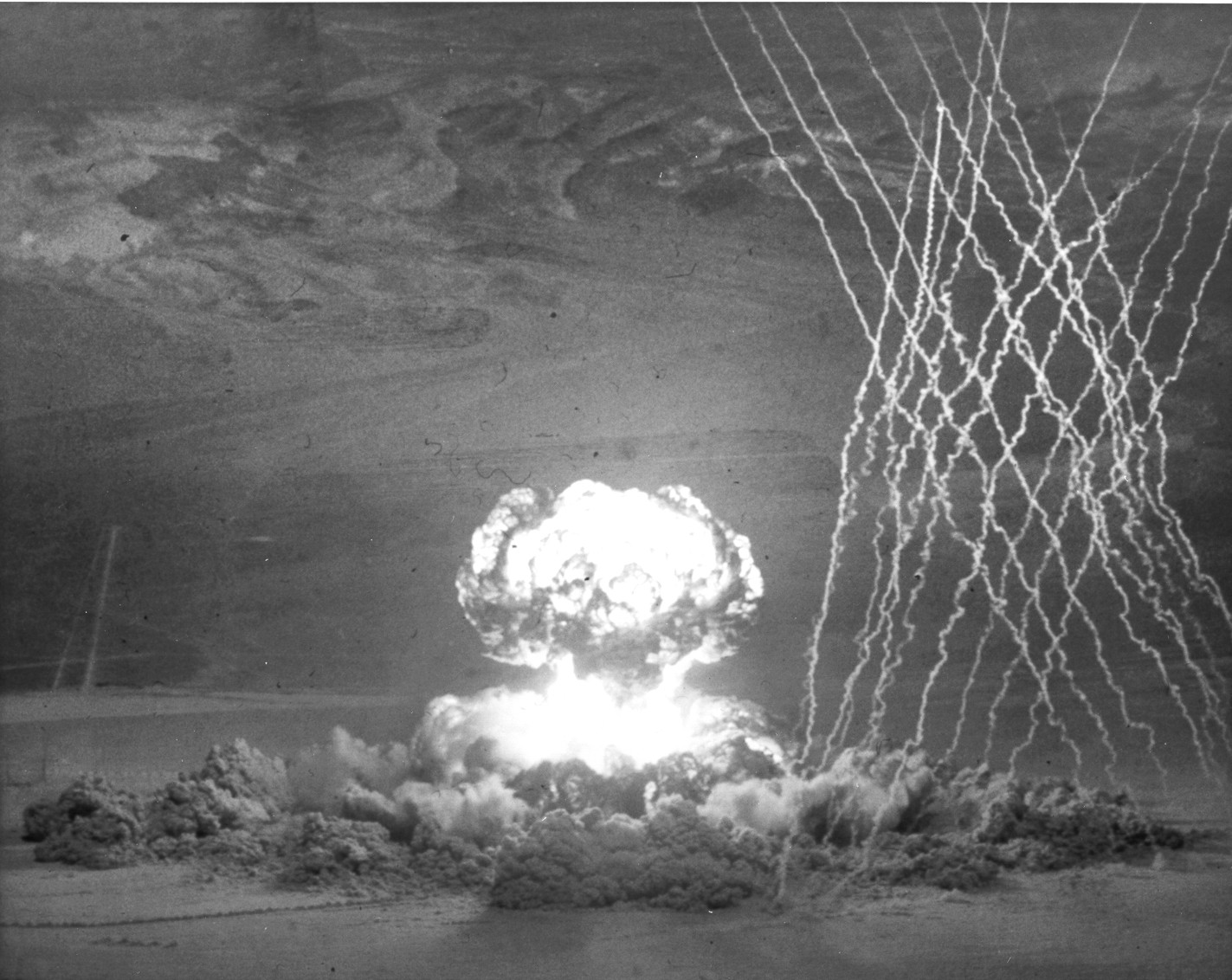
So there you have it. Thanks to @atomicarchive for explaining the science and history behind these odd-looking vertical smoke plumes. Make sure to watch the video!
Contact the author: oliver@thewarzone.com
